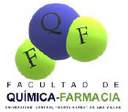Executive Secretary

7th International Symposium of Pharmaceutical Sciences
VII SICF
Abstract
Marine invertebrates are a rich and unexploited source of bioactive compounds. Natural antimicrobial peptides from these organisms are amongst the most promising molecules nowadays to face the antimicrobial resistance problem. Panusin is an antimicrobial peptide isolated from the hemocytes of the spiny lobster Panulirus argus, that displays potent and wide spectrum antimicrobial activity and non-hemolytic effect. In order to obtain an optimized structure derived from panusin, we have synthetized a peptide comprising only 23 aminoacids of the carboxyl terminus, including most of the residues suspected to be determinant for activity. We assessed antimicrobial activity of the new peptide over Gram negative organisms, as well as the capacity to bind LPS and to permeabilize bacterial membranes. Compared to the natural peptide, the carboxyl terminus fragment retained antimicrobial activity and showed a more potent permeabilizing effect and LPS neutralization properties, remaining non-toxic for human erythrocytes. We can conclude that the carboxyl terminus of panusin retains the aminoacids and structural features that are key for activity, killing bacteria in a more potent way than the natural molecule. Interestingly, the increase of activity does not affect the toxicity of the peptide, which remains selective versus pathogenic bacteria.
Resumen
Marine invertebrates are a rich and unexploited source of bioactive compounds. Natural antimicrobial peptides from these organisms are amongst the most promising molecules nowadays to face the antimicrobial resistance problem. Panusin is an antimicrobial peptide isolated from the hemocytes of the spiny lobster Panulirus argus, that displays potent and wide spectrum antimicrobial activity and non-hemolytic effect. In order to obtain an optimized structure derived from panusin, we have synthetized a peptide comprising only 23 aminoacids of the carboxyl terminus, including most of the residues suspected to be determinant for activity. We assessed antimicrobial activity of the new peptide over Gram negative organisms, as well as the capacity to bind LPS and to permeabilize bacterial membranes. Compared to the natural peptide, the carboxyl terminus fragment retained antimicrobial activity and showed a more potent permeabilizing effect and LPS neutralization properties, remaining non-toxic for human erythrocytes. We can conclude that the carboxyl terminus of panusin retains the aminoacids and structural features that are key for activity, killing bacteria in a more potent way than the natural molecule. Interestingly, the increase of activity does not affect the toxicity of the peptide, which remains selective versus pathogenic bacteria.
About The Speaker

Lic. Amanda Vázquez






